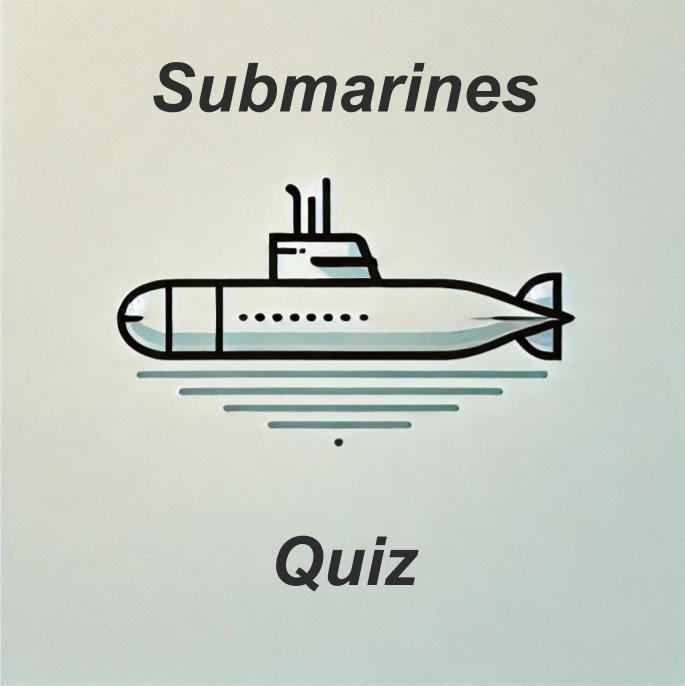This section contains all of the questions that could be a part of this quiz. The quiz will choose 15 random questions from the pool below. If you've found this section feel free to take a look but to start the quiz you should press "Start Quiz". You may also be thinking that some information is missing for some of the below questions and you'd be right! The answers listed below only contain answers that appear in the quiz, so as a hypothetical example, if a question asks about what depth a penguin can swim to and 4 options are given in the question, only the correct answer will appear in the below information. This is because this supplemental information is about the quiz itself and not intended as a comprehensive list. We hope you found the quiz to be entertaining and informative. If you haven't taken it yet, Good Luck!
Q1: Which component allows a submarine to control its depth by taking in or expelling water?
A1: Ballast tanks
Q2: What was the first submarine to complete a successful military attack in history?
A2: H. L. Hunley
Q3: Select all of the following that are main types of submarine propulsion systems:
A3: Nuclear power, Diesel-electric, Air-independent propulsion
Q4: What is the maximum operating depth of most modern military submarines?
A4: 200-400 metres
Q5: Match each submarine component to its primary function:
A5: Periscope - Surface observation, Hydrophones - Underwater sound detection, Snorkel - Air supply when submerged
Q6: Which country currently operates the largest submarine fleet in the world?
A6: China
Q7: Arrange these submarine developments in chronological order, from earliest to latest:
A7: First hand-cranked submarine, First diesel-electric submarine, First nuclear-powered submarine
Q8: What is the main advantage of a nuclear submarine over a diesel-electric submarine?
A8: Can remain submerged for months
Q9: What device do submarines use to determine the direction of underwater sounds?
A9: Hydrophone array
Q10: What is the term for a submarine's maximum safe operating depth?
A10: Test depth
Q11: Which submarine pioneered the use of nuclear propulsion in 1954?
A11: USS Nautilus
Q12: What is the primary function of a submarine's trim tanks?
A12: Maintain horizontal balance
Q13: Which part of a submarine is designed to withstand extreme pressure at depth?
A13: Pressure hull
Q14: What is the term for the vertical fin on top of a submarine?
A14: Sail
Q15: What emergency system allows submariners to escape a disabled submarine?
A15: Escape trunk
Q16: What is the name for the rotating platform that launches torpedoes from a submarine?
A16: Torpedo ring
Q17: Which gas builds up inside submarines and must be carefully monitored?
A17: Carbon dioxide
Q18: What is the term for a submarine's ability to maintain a constant depth?
A18: Neutral buoyancy
Q19: What navigational system do modern submarines use while submerged?
A19: Inertial navigation
Q20: What is the primary purpose of a submarine's anechoic tiles?
A20: Reduce sonar detection

